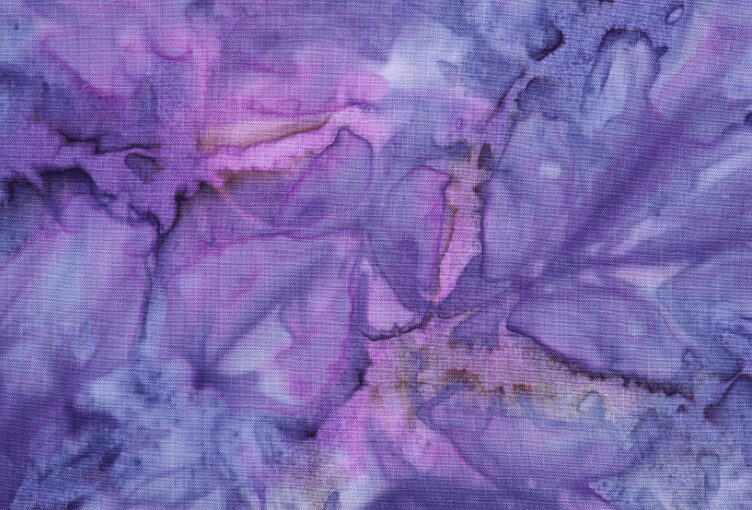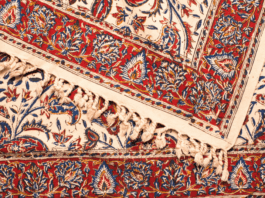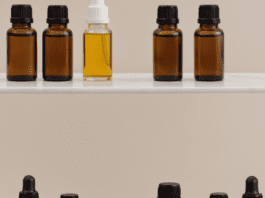
Learn how to create beautiful reverse tie-dye patterns with our step-by-step tutorial. Perfect for beginners or those looking to refine their technique
We’ll cover everything you need to know to get started with reverse tie-dye, from the best materials to use to the most common mistakes to avoid.
Reverse Tie-Dye Kit: Get Started with Amazon Complete Set
Getting a complete kit can be a great option if you’re new to reverse tie-dyeing and unsure where to start. One such kit on Amazon is the “Reverse Tie-Dye Kit” by Tulip.
This kit includes everything you need to start, including five bottles of dye, gloves, rubber bands, and an inspiration guide with project ideas. They specially planned the dye colors for reverse tie-dyeing and are sure to produce vibrant and eye-catching designs.
One of the great things about this kit is that it’s easy to use and perfect for beginners. The instructions are clear and straightforward, and the kit contains everything you need to start immediately. You don’t have to worry about purchasing individual supplies or figuring out what colors to use.
Another advantage of using a kit is that it can be more cost-effective than buying supplies separately. The Reverse Tie-Dye Kit by Tulip is affordable and provides enough dye and materials to create several projects.
Besides being an excellent option for beginners, this kit is also convenient for experienced tie-dye artists. It includes all the essential materials needed for reverse tie-dyeing, allowing you to focus on the creative process rather than worrying about sourcing supplies.
Overall, the Reverse Tie-Dye Kit by Tulip is an excellent choice for anyone interested in reverse tie-dyeing. With its complete set of materials and easy-to-follow instructions, this kit is a great way to get started and create beautiful, one-of-a-kind designs.
Step-by-Step Guide to Reverse Tie-Dye
If you’re ready to try reverse tie-dyeing on your own, here is a step-by-step guide to get you started:
- Choose your fabric: Select a fabric that’s made from natural fibers, such as cotton or rayon. These materials absorb the dye better and create more vibrant designs.
- Prepare the fabric: Wash it in hot water and dry it thoroughly. This will remove any sizing or residue that might interfere with the dye’s ability to bond with the fabric.
- Gather your supplies: You’ll need rubber bands, gloves, a spray bottle filled with water, and bleach.
- Create your design: Pinch, twist, and tie fabric sections with rubber bands. This will create areas that the bleach won’t affect and will remain the original color of the fabric.
- Apply the bleach: Put on your gloves and use the spray bottle to apply bleach to the untied areas of the fabric. Saturate the fabric thoroughly and evenly.
- Let it sit: Leave the bleach on the fabric for about 10-20 minutes, depending on the color and thickness of the fabric. You can check the progress by lifting the fabric and seeing how much of the original color has been removed.
- Rinse and wash: Rinse the fabric with cold water until the water runs clear. Then, wash the fabric in hot water with a mild detergent to remove any remaining bleach and dye particles.
- Dry and enjoy: Dry the fabric in the dryer or hang it to air-dry. Once it’s completely dry, you can admire your new reverse tie-dye design!
With this step-by-step guide, you’ll be able to create unique and beautiful reverse tie-dye designs that are sure to impress. Just follow the instructions carefully and take your time, and you’ll be a tie-dye pro in no time.
Reverse Tie-Dye with Bleach: Create Unique Designs
Reverse tie-dyeing with bleach is a creative and fun way to transform plain fabric into unique and eye-catching designs.
This technique is especially great for those who want to experiment with tie-dyeing but prefer a more subdued, monochromatic look.
By removing the color from some regions of the fabric with bleach, you can create attractive and intricate patterns that are truly one-of-a-kind.
The best part about reverse tie-dyeing with bleach is that you don’t need a lot of expensive equipment or supplies. All you need is bleach, rubber bands, a spray bottle filled with water, and the fabric you want to dye.
By twisting, folding, and tying the fabric differently, you can create a range of original designs, from bold and graphic to more subtle and abstract.
Whether you’re looking to refresh an old t-shirt or dress up a plain white sheet, reverse tie-dyeing with bleach is a versatile and creative way to give your fabrics new life. So grab some rubber bands, put on your gloves, and experiment with this fun and easy DIY technique!
Make Your Colors Pop with Reverse Tie-Dye and Vinegar
Did you know vinegar can enhance the colors in your reverse tie-dye projects? In this section, we’ll explain how to use vinegar to create vibrant colors and provide tips for achieving the best results.
If you want to take your reverse tie-dye designs to the next level, try using vinegar to help your colors pop. Vinegar is an acidic substance that can help set the dye and make it more vibrant and long-lasting.
You can achieve more saturated and intense colors using vinegar in your reverse tie-dyeing process, even in dark or heavily dyed fabrics.
To use vinegar in your reverse tie-dyeing process, mix equal parts water and vinegar in a spray bottle and use it to saturate the fabric before applying the bleach.
The vinegar will help the bleach penetrate the fabric more deeply and evenly, which will cause more consistent and saturated colors.
Just be sure to wear gloves and work in a well-ventilated area, as vinegar can be harsh on the skin, and the fumes can be strong.
With the addition of vinegar to your reverse tie-dyeing process, you can create unique and beautiful designs that truly stand out. So go ahead and experiment with this fun and simple technique, and watch your colors come to life!
Choosing the Right Fabrics for Reverse Tie-Dye
Choosing the right fabric is key to a successful reverse tie-dye project. Some fabrics work better than others when it comes to taking dye and bleach, so it’s important to choose the right one for the design you have in mind.
Generally, natural fibers like cotton, linen, and rayon are the easiest to work with when reverse tie-dyeing. These fabrics are more porous than synthetic fabrics like polyester and nylon, which makes them more receptive to dye and bleach.
When selecting a fabric for your reverse tie-dye project, consider the weight, color, and texture of the fabric. Lighter weight fabrics like cotton voile and linen are ideal for more delicate, flowing designs, while heavier fabrics like denim and canvas can be great for more graphic and bold designs.
Darker fabrics like black or navy can also produce stunning results, but may require more bleach and dye to achieve the desired effect.
It’s also important to consider the quality of the fabric you choose. A higher quality fabric will produce a more vibrant and long-lasting result, so it’s worth investing in good quality materials.
By choosing the right fabric for your reverse tie-dye project, you can ensure a successful and satisfying outcome.
Achieve Stunning Results with Reverse Tie-Dye on Black Fabric
Reverse tie-dyeing on black fabric can produce stunning and unexpected results. By using bleach to remove the dye from black fabric, you can create beautiful, intricate designs that stand out against the dark background.
Depending on the strength of the bleach and the amount of dye in the fabric, you can achieve a range of different effects, from subtle and understated to bold and graphic.
To achieve the best results when reverse tie-dyeing on black fabric, it’s important to use a strong bleach solution and to work carefully and deliberately. Begin by washing and drying the fabric to remove any sizing or residues, then apply the bleach using your chosen reverse tie-dye technique.
The bleach will remove the dye and reveal the lighter fabric underneath. Be sure to work in a well-ventilated area and wear gloves to protect your skin from the bleach.
When reverse tie-dyeing on black fabric, it’s important to be patient and work slowly. It may take several rounds of bleaching and washing to achieve the desired effect, so don’t be afraid to experiment and try different techniques. With some practice and patience, you can create stunning and unique designs on black fabric that are sure to turn h
Give Your Denim a New Look with Reverse Tie-Dye
Reverse tie-dyeing can be a great way to give your denim a fresh and modern update. Whether you’re looking to revive an old pair of jeans or create a unique and personalized jacket, reverse tie-dyeing can help you achieve a one-of-a-kind look that stands out from the crowd.
To begin reverse tie-dyeing on denim, start by prepping the fabric. Wash and dry the denim to remove any sizing or residues, then choose your reverse tie-dye technique and apply the bleach. Denim can be trickier to work with than other fabrics, as it’s often thicker and more heavily dyed, so be prepared to use a strong bleach solution and work slowly and carefully.
One fun way to use reverse tie-dyeing on denim is to create a faded, ombre effect on the fabric. This can be achieved by using a spray bottle or sponge to apply the bleach gradually, working from the bottom of the garment upwards. Another popular technique is to use rubber bands or string to create intricate and unique designs on the fabric.
No matter which technique you choose, reverse tie-dyeing on denim can give your clothes a new lease on life and help you stand out from the crowd. With a little creativity and some patience, you can achieve stunning and long-lasting results on your denim garments.
10 Creative Reverse Tie-Dye Designs to Try
Reverse tie-dyeing is a versatile and fun technique that can create various unique and eye-catching designs. Here are 10 creative reverse tie-dye designs to try on your next project:
- Ombre: Create a gradual fade from dark to light using bleach, resulting in a stunning ombre effect.
- Polka Dots: Use rubber bands to create circles and create a playful polka dot pattern.
- Galaxy: Create a starry night sky effect by blending shades of blue, purple, and black with bleach.
- Stripes: Create bold stripes by sectioning off parts of the fabric with rubber bands.
- Checkerboard: Use rubber bands to create a checkerboard pattern with alternating bleach and natural-colored squares.
- Splatter: Dip a toothbrush in bleach and flick the bristles onto the fabric to create a speckled or splattered effect.
- Waves: Use rubber bands to create a wavy pattern that mimics the look of ocean waves.
- Geometric: Create a modern and edgy design by using masking tape to create sharp lines and angles.
- Sunburst: Use rubber bands to create a starburst pattern with a central point and rays of bleach.
- Heart: Create a sweet and romantic look with a heart-shaped design, created by folding the fabric into a heart shape and binding it with rubber bands.
These are just a few of the many creative designs that can be achieved with reverse tie-dyeing. With a little experimentation and creativity, the possibilities are endless!
Avoid These Common Reverse Tie-Dye Mistakes
Reverse tie-dye is a fun and unique way to give your clothing a new look. However, people make a few common mistakes when attempting this technique. Here are some mistakes to avoid when trying reverse tie-dye:
- Using the Wrong Fabric: Not all fabrics are created equal regarding reverse tie-dye. It’s important to choose a fabric that will take the dye well and not bleach out too much. Cotton and natural fabrics are the best choice for reverse tie-dye.
- Not Prepping the Fabric: Before reverse tie-dyeing, it’s essential to wash and dry the fabric to remove any sizing or dirt. This will help the fabric take the dye evenly and prevent unwanted bleach spots.
- Using Too Much Bleach: It can be tempting to use a lot of bleach to get a quick and dramatic effect, but too much bleach can weaken the fabric and cause holes to form. Use bleach sparingly, and always dilute it with water.
- Over-Applying Dye: Like bleach, it’s important to apply dye evenly and sparingly. Over-applying dye can result in splotchy or uneven results.
- Not Waiting Long Enough: Reverse tie-dye takes time and patience. It’s important to wait for the bleach or dye to fully set and develop before rinsing it out. Rushing the process can result in uneven or faded colors.
- Not Protecting Your Work Area: Bleach can be corrosive and damaging to surfaces. Always work in a well-ventilated area and protect your work surface with plastic or a drop cloth.
By avoiding these common mistakes, you can achieve beautiful and professional-looking results with reverse tie-dye. With a bit of patience and practice, you’ll be able to create unique and stunning designs on your clothing and accessories.
FAQ
How do I reverse tie-dye a shirt?
To reverse tie-dye a shirt, you must follow a few steps. First, tie the shirt using rubber bands or string in your desired pattern. Next, apply bleach or dye to the tied areas of the shirt. Wait for the bleach or dye to set, then rinse the shirt thoroughly. Finally, untie the shirt and wash it to remove any remaining bleach or dye.
How long does reverse tie-dye take?
The time it takes to reverse tie-dye depends on a few factors, including the fabric you’re using and the effect you’re trying to achieve. Generally, it would be best if you planned for the process to take at least a few hours, as you’ll need time for tying, applying bleach or dye, waiting for the product to set, and rinsing the garment.
Can you reverse tie-dye black clothes?
Yes, it is possible to reverse tie-dye black clothes. However, the result may not be as dramatic as when working with lighter colored fabrics. When reverse tie-dyeing black clothes, you’ll want to use a bleach solution that is stronger than what you would use on lighter fabrics.
What types of fabrics can you reverse tie-dye?
You can reverse tie-dye a variety of fabrics, but natural fibers like cotton and linen tend to work best. Synthetic fabrics may not take the dye as well and can result in uneven or splotchy coloring.
How can I protect my skin and work area while reverse tie-dyeing?
To protect your skin and work area while reverse tie-dyeing, you should wear gloves and protective clothing. You should also work in a well-ventilated area and protect your work surface with plastic or a drop cloth. It’s important to use bleach or dye carefully, as they can be corrosive and damaging to surfaces and skin.
Can I use regular bleach for reverse tie-dye?
Yes, you can use regular bleach for reverse tie-dyeing. However, you’ll want to dilute the bleach with water and use it sparingly to avoid damaging the fabric or creating unwanted holes. You can also use a bleach pen or spray bottle for more precise application.
How do I prevent bleeding and fading of reverse tie-dye?
To prevent bleeding and fading of reverse tie-dye, it’s important to wash and rinse the garment thoroughly after applying the bleach or dye. You can also use a fixative to set the color and prevent bleeding.
Reverse tie-dyeing is a fun and creative way to give your clothing and accessories a new look. By following these frequently asked questions and their corresponding answers, you can learn more about the process and achieve beautiful and professional-looking results.
Conclusion
Reverse tie-dye is a unique and exciting way to add a personal touch to your clothing and fabric items. With the suitable materials and techniques, you can create stunning and one-of-a-kind designs that are sure to impress.
From using a complete kit to choosing the right fabrics, there are many ways to get started with reverse tie-dye. By avoiding common mistakes and experimenting with different designs, you can take your creativity to the next level.
So why not try reverse tie-dye and see what amazing results you can achieve? With the information and tips provided in this article, you’ll be on your way to creating your own beautiful designs in no time.
Last update on 2024-04-12 / Affiliate links / Images from Amazon Product Advertising API





